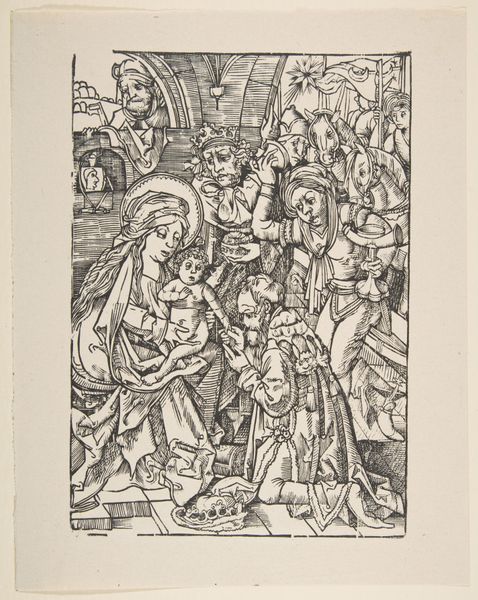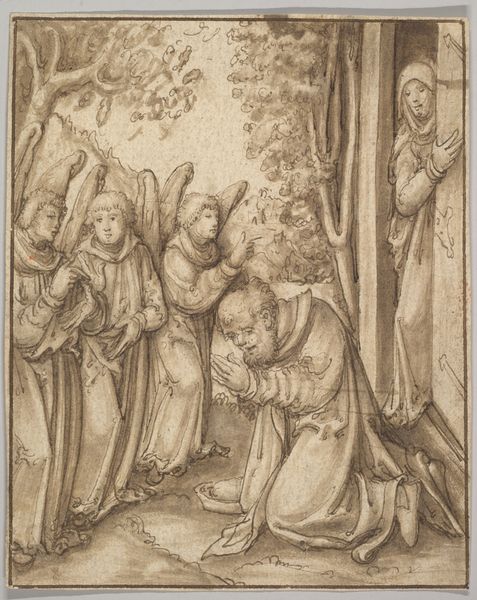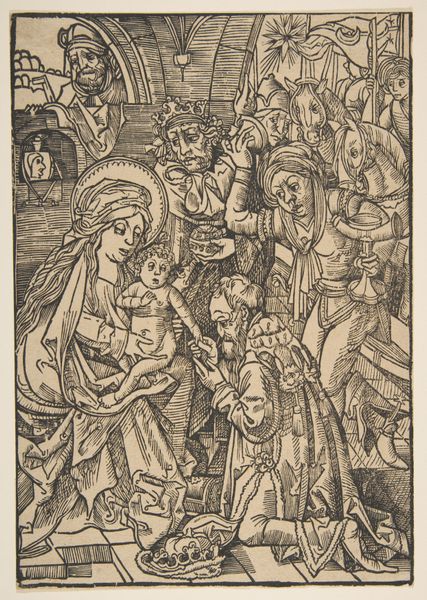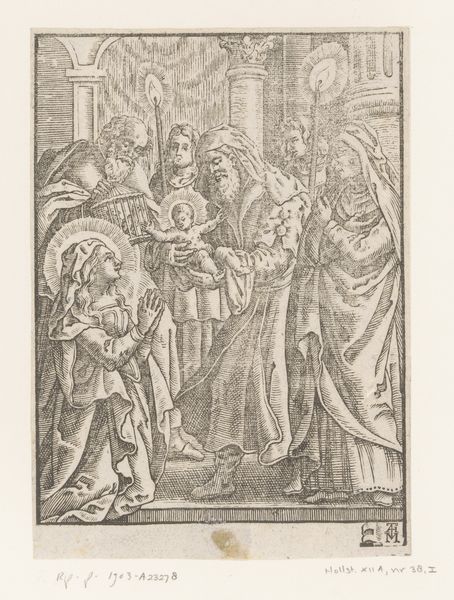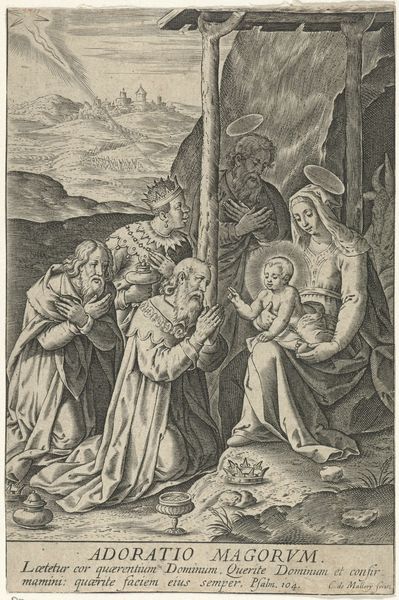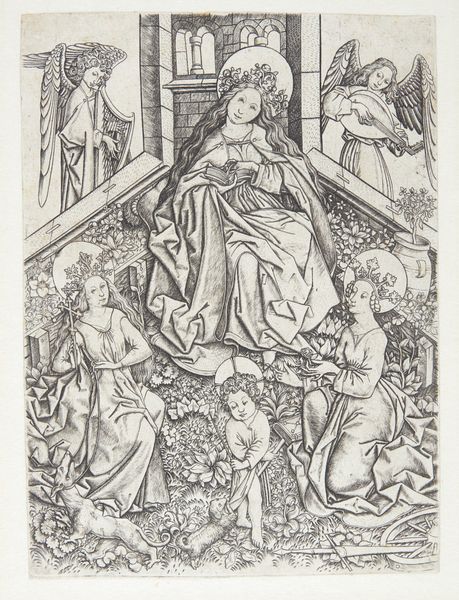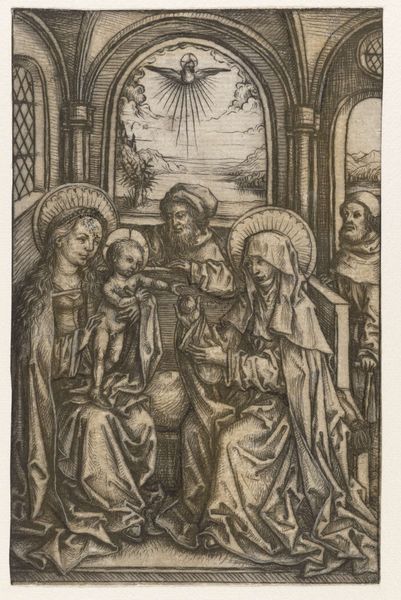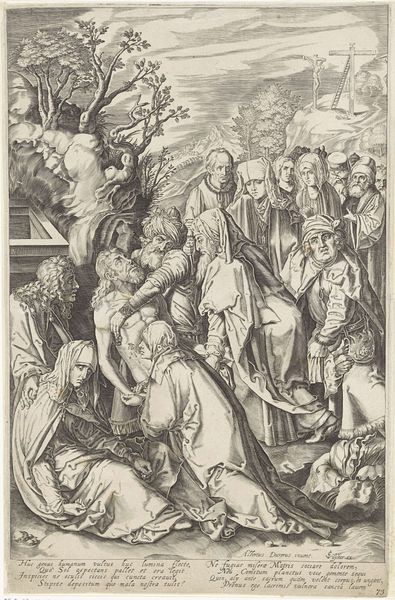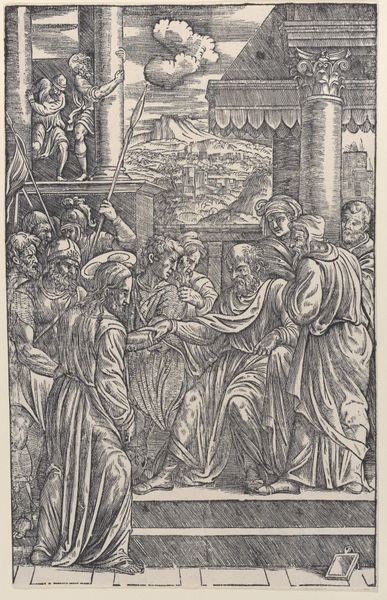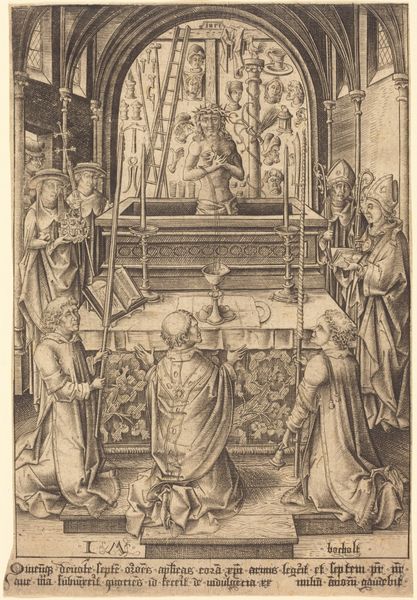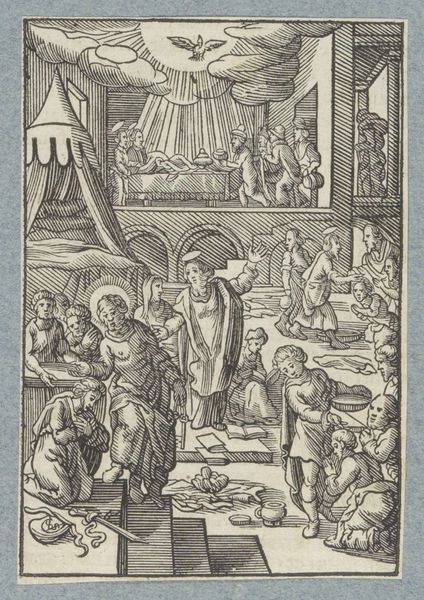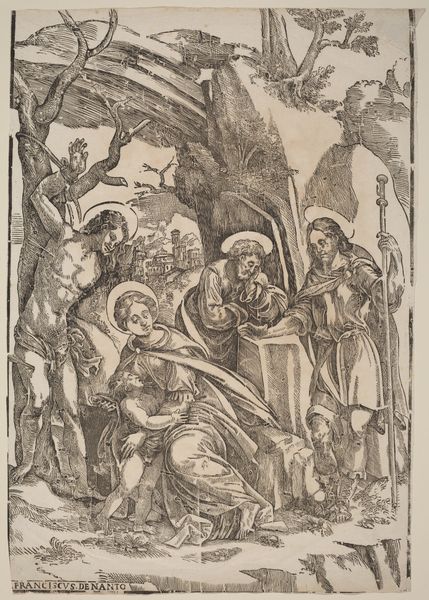
drawing, print, engraving
#
drawing
# print
#
figuration
#
history-painting
#
northern-renaissance
#
engraving
Dimensions: sheet: 12.8 × 8.1 cm (5 1/16 × 3 3/16 in.)
Copyright: National Gallery of Art: CC0 1.0
Curator: I find myself drawn in by the incredible detail for such a small work. It’s an engraving titled "The Adoration of the Magi," dating back to around 1460-1465, and is attributed to Master E.S., a prominent artist of the Northern Renaissance. The engraving medium itself, allows for a distribution of the image through printmaking. Editor: It's quite arresting. The level of detail given the tiny, intimate scale… the architecture is almost as much a character as the figures. But overall, a feeling of... expectancy hangs in the air. Do you feel it too? Curator: Definitely. And this depiction differs greatly from Italian versions that are bursting with pageantry, this scene takes place under what appears to be the modest shelter. It’s such an intimate family scene under the eyes of onlookers from different walks of life. Editor: Exactly! The simplicity! But look at the lines around each fold and crease on their garments! Even the tiny hair of the child is perfectly delineated, its very real, human details like that contrast nicely with that very stylized rendering that feels both familiar and foreign all at once, which makes it so much more intriguing to look at! Curator: Absolutely, we see how the subject elevates something sacred while portraying what appears as common figures. The way Master E.S. has constructed the setting makes you wonder what kind of socio-cultural influences from the late medieval period played into creating these religious representations in a new light. Editor: It certainly prompts thoughts of how religion has shifted, in its place and the spaces we assign for it! I keep getting caught by those little details, though: look at the different kinds of fabric captured by such spare lines, a feast! Well, for the eyes, at least! It almost brings you into a silent observation from far afar and asks for the viewer's personal relation to be given meaning. Curator: I completely agree. "The Adoration of the Magi" serves as a powerful reminder that art reflects its time while also influencing its future. Editor: Indeed. So much meaning, captured in a microcosm. Thanks for sharing all of this context—gives us plenty to mull over next time around.
Comments
No comments
Be the first to comment and join the conversation on the ultimate creative platform.
